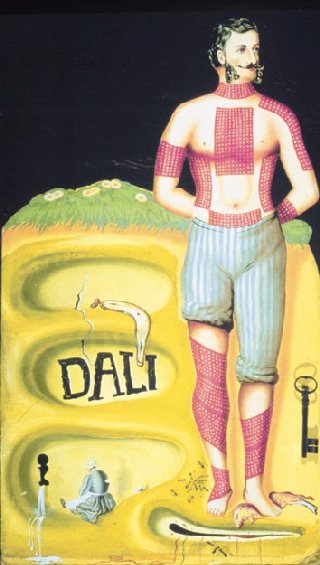

Andy Warhol and Salvador Dali both have museums named after them -- an amazing feat in the world of art. Dali (1904-1989) belonged to the generation of artists before Warhol, but in the 1960s he became part of the pop art scene, and an acquaintance of Warhol�s.
It is very appropriate that these two great single-artist museums -- The Andy Warhol Museum and the Salvador Dali Museum in St. Petersburg, Florida -- should loan some of their treasures to each other for exhibition. The Warhol will have 20 works from the Dali Museum on display during the same period that some of Warhol�s works are on display at the Dali Museum.
Some said Warhol patterned his own passage to fame after Dali�s. Despite the artistic differences between Dali�s surrealism and Warhol�s pop art, they shared many qualities as successful artists. Both worked hard, were very creative, and explored many different media, including film. They were productive during long careers. Each achieved fame early, and built on that to become celebrities. In his later period, Dali, like Warhol, explored religious themes.
Like Warhol, Dali had his entourage of devotees. In the 1960s one of
them left him to join Andy Warhol�s crowd of followers, and renamed herself
"Ultra Violet." Warhol once published a few of his thoughts about Dali
and his wife and model, Gala:
The Dali Museum, like the Warhol, is based on the greatest collection of the artist�s work. Eleanor and A. Reynold Morse of Cleveland began collecting Dali works in the 1940s and through the decades assembled works representing his entire artistic career. When in the 1970s the Morses began a nationwide search for a large permanent and public home for their collection they decided on St. Petersburg, Florida -- a city which campaigned hard for the museum. St. Petersburg offered strong government and private support, and also a large unused maritime building which was adapted to be a museum.
The Andy Warhol Museum, of course, is the largest single-artist museum in the world, and was created from the greatest collection of Warhol�s work, made available after the artist�s death by the Dia Center for the Arts and the Andy Warhol Foundation for the Visual Arts. It too is housed in a downtown industrial building turned into a museum, and is a key tourist attraction for the city, with a wide array of public programs.
Products from the Dali Museum will be sold at the Warhol store.
Contents |
Highlights |
Calendar |
Back Issues |
Museums |